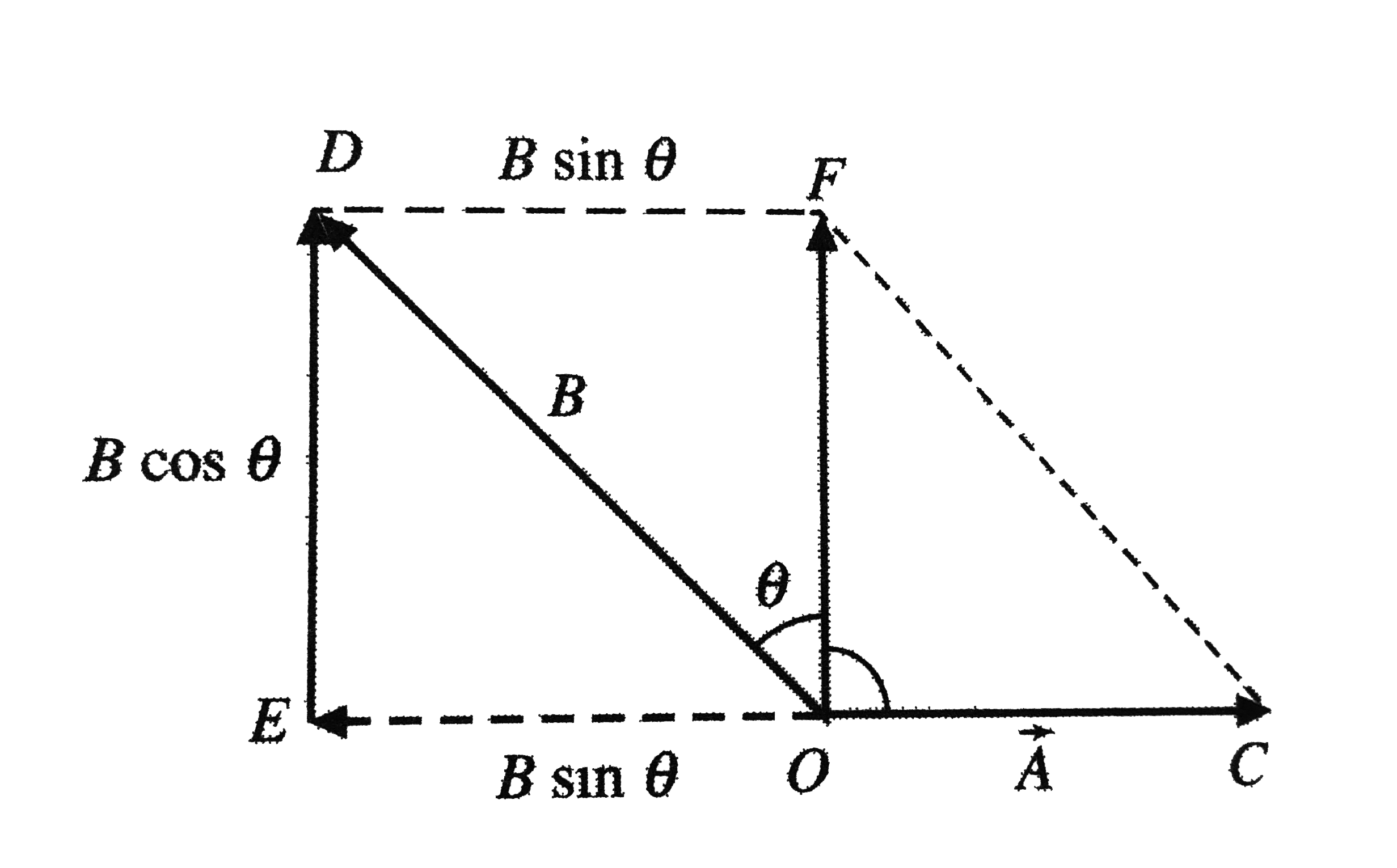If for two vector →A and →B sum (→A+→B) is perpendicular to the difference (→A−→B). The ratio of their magnitude is
A=3B
A=2B
A=B
B=2A
The correct Answer is:C
(c): Dot product of the sum and difference must be zero.
(→A+→B).(→A−→B)=0
⇒→A.→A+→B.→A−→A.→B−→B.→B=0
→A.→B is equal to →B.→A
⇒→A.→A−→B.→B=0
⇒→A.→A−→B.→B=0
⇒A2−B2=0
⇒A=B
Hence, option (c) is correct .
Topper's Solved these Questions
- BOOK - MODERN PUBLICATIONCHAPTER - MOTION IN A PLANE EXERCISE - COMPETITION FILE OBJECTIVE TYPE QUESTIONS (B. Multiple Choice Questions)38videos
MOTION IN A PLANE
- BOOK - MODERN PUBLICATIONCHAPTER - MOTION IN A PLANE EXERCISE - COMPETITION FILE OBJECTIVE TYPE QUESTIONS (JEE (Main) & Other Boards for Engineering Entrance)14videos
MOTION IN A PLANE
- BOOK - MODERN PUBLICATIONCHAPTER - MOTION IN A PLANE EXERCISE - Revision Exercises (Numerical Problems)26videos
MOTION IN A PLANE
- BOOK - MODERN PUBLICATIONCHAPTER - MECHANICAL PROPERTIES OF FLUIDSEXERCISE - Chapter Practise Test16videos
MECHANICAL PROPERTIES OF FLUIDS
- BOOK - MODERN PUBLICATIONCHAPTER - MOTION IN A STRAIGHT LINE EXERCISE - CHAPTER PRACTICE TEST16videos
MOTION IN A STRAIGHT LINE
Similar Questions
The resultant of two vectors →A and →b is perpendicular to the vector →A and its magnitude is equal to half the magnitude of vector →B. The angle between →A and →B is
View SolutionThe resultant of two vectors →A and →B is perpendicular to →A and equal to half of the magnitud of →B. Find angle between →B and →B?
View Solution
Knowledge Check
- Question 1 - Select One
The vector (→a.→b)→c−(→a.→c)→b is perpendicular to
A→bB→aC→cD→b×→c - Question 2 - Select One
For vectors →A and →B, (→A+→B).(→A×→B) will be :
AA2B2B(A+B)(AB)CzeroD√A2+B2+AB - Question 3 - Select One
Two vectors →A and →B are such that →A+→B=→A−→B. Then
A→A⋅→B.=0Bvec(A)xxvec(B)=0C→a.→b=→b.→c=→c.→aD→a×→b+→b×→c+→c×→a=→0
The resultant of two vectors →A and →B is perpendicular to the vector →A and its magnitude is equal to half of the magnitude of the vector →B. Find out the angles between →A and →B.
 .View Solution
.View SolutionIf ∣∣→A+→B∣∣=∣∣→A−→B∣∣, then the angle between →Aand→B will be
View SolutionVectors →Aand→B are mutually perpendicular . Component of →A+→B in the direction of →A−→B will be:
View SolutionIf vectors →Aand→B are such that ∣∣→A+→B∣∣=∣∣→A∣∣=∣∣→B∣∣ then ∣∣→A−→B∣∣ may be equated to
View SolutionFor the any two vecrtors →A and →B, if →A.→B=∣∣→A×→B∣∣, the magnitude of →C=→A+→B is equal to
View Solution

